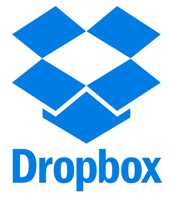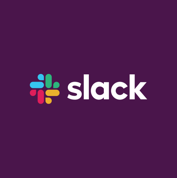eResearch | As the COVID-19 pandemic socially isolates most economies across the world, the business world is quickly changing from office space to remote environments. Companies adapting online are undergoing three key areas of digital transformation: (1) cloud storage, (2) workplace communication, and (3) video conferencing.
Dropbox Inc. (NASDAQ: DBX), Slack Technologies Inc. (NYSE: WORK), and Zoom Video Communication Inc. (NASDAQ: ZM), are each technology companies with different platforms and tools that support remote work environments. Each company’s solutions work synergistically with each other as many mutual benefits occur when integrating vertical workflow management operations.
Below are three publicly traded companies focused on each key area of digital transformation:
Dropbox
Dropbox is a cloud based Software-as-a-Service (“SaaS”) company that allows users to store, backup and share documents for free, up to a limited storage capacity, after which users must pay a monthly fee for additional storage. The SaaS company listed on a public stock exchange in 2017, but has since been struggling to turn a profit due to over US$500 million in stock-based compensation stemming from agreements made in the IPO.
 Over the last couple of years, Dropbox has focused on collaborating with numerous partners to build a mutually beneficial ecosystem where companies can cross-sell and integrate cloud-based solutions. Dropbox’s network has grown to 40 complementary cloud solutions, through partnerships with enterprise servicing companies such as Microsoft and Google, and integrations with communication platforms such as Slack and Zoom.
Over the last couple of years, Dropbox has focused on collaborating with numerous partners to build a mutually beneficial ecosystem where companies can cross-sell and integrate cloud-based solutions. Dropbox’s network has grown to 40 complementary cloud solutions, through partnerships with enterprise servicing companies such as Microsoft and Google, and integrations with communication platforms such as Slack and Zoom.
Dropbox generates 90% of its revenues through organic adoption from its self-serve go-to-market strategy, where enterprises and consumers are converted into long-term paying clients after testing the platform; Dropbox currently has over 600 million users and 450,000 business teams across the world.
Dropbox FY2019 Financial Highlights
- Revenue of US$1.6 billion, a 19.4% increase year-over-year, mainly due to an increase in price for its existing Plus plan and an increase in the number of paying clients; does not include US$554.2 million in deferred revenue.
- Revenue growth rate dropped to 19.4% compared with 26% in 2018 and 31% in 2017, mainly due to larger competitors such as Alphabet and Microsoft entering the space.
- Gross margin increased to 75% compared with 72% the previous year, primarily due to a higher increase in revenue offset by a lesser increase in cost of revenue.
- Operating expenses of US$1.3 billion, a 10.7% decrease year-over-year, mainly due to a 13.8% and 7.4% drop in stock-based compensation costs for teams in R&D and SG&A, respectively, related to performance vesting conditions made during the IPO.
- Cash Flow from Operations of US$528.5 million and $320.0 million spent on Capital Expenditures, Acquisitions and other Investing activities.
- Net Loss of US$52.7 million, a US$425 million improvement from last year, mainly due to significant decreases in stock-based compensation costs and increases in sales.
- Balance sheet increased US$69.7 year-over-year and consists of cash and cash equivalents of US$551.3 million, short-term investments of US$607.7 million, and debt obligations of US$177 million.
Slack
As businesses turn to remote environments, Slack, a popular online workplace communications platform, reported a 20% increase in simultaneously connected users on its platform to 12.5 million, with 9000 new customers so far in Q1/2020. In comparison, Slack only added 5,000 paid customers in both Q3/2019 and Q4/2019.
 Last year, Slack grew its number of paid customers on its platform by 25% to 110,000, of which 9% were companies who spent more than US$100,000 annually. These high spending customers make up 47% of Slack’s revenue, and the number of these companies on the platform grew by 55% last year.
Last year, Slack grew its number of paid customers on its platform by 25% to 110,000, of which 9% were companies who spent more than US$100,000 annually. These high spending customers make up 47% of Slack’s revenue, and the number of these companies on the platform grew by 55% last year.
Slack is also making strategic moves by collaborating with Microsoft Corporation to develop technology, which allows integrated cross-platform communication between Slack and Microsoft Teams, an online communication platform launched by Microsoft in 2017, which quickly surpassed Slack in customers after the platform was given free to its Microsoft 365 subscribers.
Slack FY2019 Financial Highlights
- Revenue of US$630 million, a 57% increase year-over-year, including US$227 million from deferred revenue received in the previous year; current outstanding deferred revenue increased to US$375 million, a 56% increase year-over-year.
- Operating expenses of US$1.1 billion, a 123% increase year-over-year, mainly due to increased spending in R&D to US$436 million, a 191% increase year-over-year, and increased spending in SG&A to US$664 million, a 92% increase year-over-year.
- Cash Flow from Operation was a loss of US$12.4 million and Capital Expenditures were US$49.6 million.
- Net loss of US$568 million, a 311% increase year-over-year, attributed to stock-based compensation expenses of US$456 million.
- Cash and Short-term Investments were US$768.6 million, a decrease of US$72.5 million, but Slack has no debt.
Zoom
Zoom, a video conferencing platform that listed publicly on the NASDAQ last year at a US$16 billion valuation, is positioned to benefit from the shift of businesses adapting to remote environments due the COVID-19 lock-downs. According to Apptopia, Zoom increased its daily active user count by 378% last week compared to the previous year, with monthly active users increasing by 186%, though the majority of new users have yet to convert into paying clients.
 Zoom offers a video conferencing platform to users for free with a limit of 100 participants and 40 minutes, after which companies can pay a subscription fee to increase capacity and add advanced features. Compared with competitors, Zoom is available internationally on various platforms and is known for its reliable network connections.
Zoom offers a video conferencing platform to users for free with a limit of 100 participants and 40 minutes, after which companies can pay a subscription fee to increase capacity and add advanced features. Compared with competitors, Zoom is available internationally on various platforms and is known for its reliable network connections.
The video conferencing platform experienced rapid growth through partnerships with other platforms such as Salesforce, a SaaS company focused on CRM, to allow sales professionals to seamlessly make conference calls without the need of leaving the Salesforce platform. Zoom’s most recently announced partnership was with NextTech AR Solutions, who plans to use Zoom’s platform to support “real-time Q&A Plus immersive AR” with up to 100,000 participants.
Zoom FY2019 Financial Highlights
- Revenue of US$622.7 million, an 88% increase year-over-year, with existing customers accounting for 63% of the increase and new customers accounting for 37% of the increase; does not include US$106.3 million in deferred revenue.
- Gross margin was maintained at 81.5%, with data centres expenses and third-party cloud hosts accounting for majority of the increases in the cost of revenue.
- Operating expenses of US$494.6 million, an 88% increase year-over-year, mainly due to R&D expenses of US$67 million, a 103% increase year-over-year, and SG&A expenses of US$427.5 million, an 86% increase year-over-year, of which US$128 million was used towards new hires
- Cash Flow from Operations of US$151.9 million and $38.1 million spent on Capital Expenditures.
- Net income of US$25.3 million, a 234% increase year-over-year, mainly due to an increase in higher margin clients, with a 61% increase in clients with more than 10 employees and an 86% increase in clients paying more than US$100,000 annually.
- Balance sheet includes cash and cash equivalents of US$283.1 million and marketable securities of US$572 million.
//



